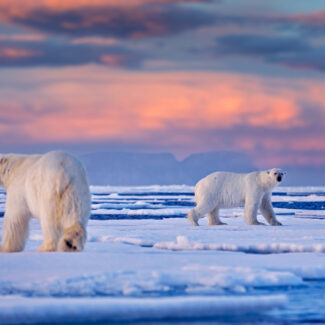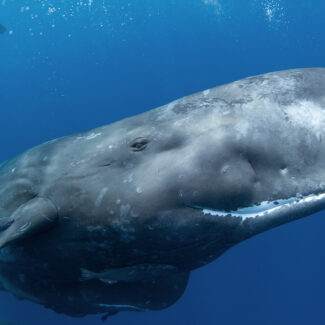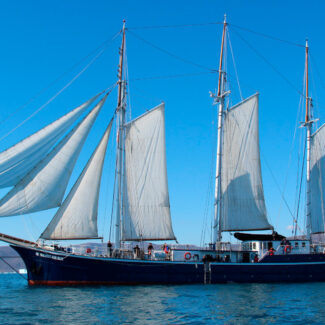Christmas & New Year In Antarctica
Why not do something truly special for Christmas or New Year’s this time around, and spend it at the bottom of the world? These holidays fall right in the middle of prime time for Antarctic tourism, so it’s very much doable to mark them on the White Continent.
What’s Christmas and New year like in Antarctica, exactly? And how do the people who actually live (seasonally) in Antarctica celebrate? Let’s take a foray into the festivities afoot in Antarctica over the holiday season.
Christmas in Antarctica
Christmas has quite a different vibe in Antarctica than those hailing from the northerly latitudes are used to. In the Northern Hemisphere, of course, Christmas Day lands just after the Winter Solstice: the shortest day of the year, in other words. (In fact, the Ancient Romans marked their Winter Solstice on December 25th.) Long nights in the very clutch of wintertime set the backdrop for the yuletide stretch of the calendar in the north.
In Antarctica, by contrast, Christmas falls right after the Summer Solstice. Most of the White Continent is experiencing 24 hours or so of sunlight this time of year. Nighttime is not part of the equation—just a brief interlude of twilight at the most northerly reaches of Antarctica. It’s hard to imagine ghostly connotations such as famously feature in Charles Dickens’ A Christmas Carol ever arising out of sun-blasted Antarctic Christmas observances.
Indeed, the bigger celebration in Antarctica as compared to Christmas is Midwinter Day, which falls on the austral Winter Solstice of June 20th or 21st and sees the most exuberant festivities go down at the polar research stations, as hardy overwintering scientists and staff celebrate the (eventual) return of the Sun.
For Antarctic research stations, Christmas comes during the midst of the busiest season, when (comparatively) balmy conditions and all of that sunlight allow for plenty of fieldwork. And the holiday hits during the height of tourism season in Antarctica, which corresponds (unsurprisingly) with the austral summer. For Antarctic scientists and tour operators, in other words, there’s not exactly a holiday break.
Imagine spending Christmas in this incredible setting! Amidst the serene beauty of the Antarctic landscape, scientific stations and expedition bases offer a unique and inspiring way to celebrate the holidays, surrounded by nature’s unparalleled grandeur.
Antarctica Christmas Traditions
We’ve already pointed out that Midwinter Day is somewhat of a bigger deal in Antarctica than Christmas. Besides the understandable human need for bit of good cheer during the around-the-clock night of the Winter Solstice, this is partly because personnel at research bases have more downtime—and thus more capacity for decorating, socializing, and all-around partying—in the darkness and cold of late June as compared to late December, when everyone’s focused on research, maintenance work, and other hustling-and-bustling summertime activities. (Indeed, plenty of Antarctica’s scientists aren’t even at bases on Christmas Day, but rather tenting out in even-more-remote field camps.) And, naturally, many people in Antarctica are thousands and thousands of miles away from their families on Christmas, so the holiday lands a bit differently.
But that’s not to say that Christmas is just like any other day. Research stations certainly mark the occasion with a special meal and merrymaking. Many workers there will likely be opening gifts from folks back home that they’ve been stowing away. (There’s not really any holiday shopping per se available on the bases.)
One of the best-known Christmas traditions in Antarctica takes place at the Amundsen-Scott South Pole Station run by the U.S.. Christmas Day here sees the “Race Around the World,” when participants run a two-mile circuit three times around the Geographic South Pole—passing through all of the globe’s time zones and lines of longitude in the process.
Even in the remote and awe-inspiring landscape of Antarctica, holiday traditions bring warmth and cheer! Whether it’s unique decorations at research stations or festive gatherings on expedition ships, celebrating Christmas in this unparalleled wilderness creates truly unforgettable and inspiring memories.
Historical Antarctic Christmases
It’s worth noting that people have been celebrating Christmas in Antarctica in one form or another for more than a hundred years. Given when the holiday falls, many of the iconic expeditions that played out during the Heroic Age of Antarctic Exploration got to experience Christmas in superlative isolation. Despite the inherent deprivations, special eats, extra rations of cheering libations, and hearty holiday sing-alongs were part of these early Antarctic Christmas observances.
Roald Amundsen famously wrote of his South Pole expedition’s yuletide celebration in 1911: “I doubt whether anyone at home enjoyed his Christmas dinner so much as we did that morning in the tent.” And the Australian explorer Douglas Mawson, another of the immortal figures of Antarctic exploration, described some memorable Christmas repast in the polar wilds in 1913: “An ounce each of butter was served out from our small stock to give a festive touch to the dog-stew.”
Transport yourself back to 1911 at Framheim, where explorers like Roald Amundsen and his team spent their Christmas! This glimpse into a historical Antarctic Christmas reveals the camaraderie and dedication required to survive and thrive in Earth’s most extreme environment.
Source: Nasjonalbiblioteket from Norway, CC BY 2.0 <https://creativecommons.org/licenses/by/2.0>, via Wikimedia Commons
Antarctic Reindeer?
You won’t be seeing any reindeer—let alone any red-nosed ones—down in Antarctica around Christmas, or any other time of year. Reindeer, aka caribou, are a large deer species (cervid) native to the higher latitudes of the Northern Hemisphere—and, tradition goes, downright essential residents of Santa’s headquarters up at the North Pole.
That said, there is an interesting reindeer tie-in to the Antarctic zone. In the early decades of the 20th century, Norwegian whalers introduced reindeer to the remote, mountainous island of South Georgia—today a common stopover on Antarctic cruises, given the scenery and wildlife spectacles—to serve as a food source.
The non-native ungulates proliferated on the island, existing in higher densities than most natural caribou populations on the other side of the world. As so many of these stories tend to play out, the introduction of these exotic grazers had major impacts to the South Georgia ecosystem, which hadn’t evolved with creatures in that particular ecological niche. Reindeer severely overgrazed tussac grasslands and other habitats, threatening their viability.
It was thus decided, eventually, to remove the South Georgia reindeer. The herds were eradicated between 2013 and 2014. Though you won’t spot any of these Christmassy beasts roaming the windswept slopes and benches of South Georgia these days, you can see one still prominently displayed on the flag of this British Overseas Territory.
Although not on the main cruise itineraries, another sub-Antarctic wilderness, the French-controlled Kerguelen (or Desolation) Islands, have their own population of feral caribou roaming yet. And so, improbably, reindeer still claim a small foothold in the Antarctic zone, thanks to the intervention of humankind.
While traditional reindeer might not brave the deep Antarctic ice, places like South Georgia, a sub-Antarctic island, have their own fascinating history with these festive animals! This stunning view of a remote outpost reminds us of the diverse and surprising stories that unfold across the Southern Ocean’s captivating landscapes.
New Year’s Eve in Antarctica
As with Christmas, Antarctic seasonal workers and sightseers alike celebrate the New Year along with the rest of the world. At the biggest research base on the White Continent, McMurdo Station, the associated festivities even include a well-known music festival on or around New Year’s Day: Icestock.
From the coastal research stations to many a cruise ship, the dawn of a brand-new year often comes heartily marked by polar plunges, also part of many a New Year’s Day celebration in wintry climes of the Northern Hemisphere. Experiencing this dip in the decidedly chilly Antarctic waters is something of a rite of passage.
Reasons to Mark Christmas and/or New Year in Antarctica
Spending the Christmas or New Year holiday down on the White Continent—quite possibly both, depending on your itinerary—has a lot going for it. Here are a few reasons to consider it:
- A White Christmas: It’s guaranteed in Antarctica. That’s more than you can say for a lot of northern cities.
- Epic Holiday Scenery: It’s hard to beat the panoramas of unspoiled, uninhabited mountainscapes, glacial expanses, and iceberg-peppered brine that’ll enfold you on Christmas or New Year’s Day down at the bottom of the world.
- Wildlife Spectacles: Late December is a fabulous time to see Antarctic wildlife, including heart-meltingly adorable penguin chicks and seal pups. That makes up for the decided lack of reindeer, right?
- Ditch the Holiday Madness & Anxiety: Sure, the yuletide season can be pleasantly festive, but these days it’s also got the whole over-commercialized, retail-oriented, relentless-Christmas-muzak thing going on as a sort of holiday dark side. What better place to escape from all of that—and the all-too-familiar stress of hosting (and cleaning up after) holiday parties and gatherings—than Earth’s last great wilderness?
- Around-the-Clock (or Thereabouts) Sunshine: It’s a kick—and a boon for packing as much sightseeing, wildlife-watching, and outdoor recreation in as possible—to experience Christmastime or New Year’s with a surfeit of sunlight.
Long story short, you can essentially rest assured that Christmas and New Year’s in Antarctica are going to be legitimately unforgettable, even without the Santa parades and fireworks. No question these will lodge in your memory as among the standout holidays of your lifetime, just given the utterly incredible setting!
Imagine ringing in the holidays with a view like this! Celebrating Christmas or New Year in Antarctica offers unparalleled scenery, from dramatic sunsets over icebergs to abundant wildlife, creating inspiring and truly unforgettable memories in a landscape few ever witness.
Christmas & New Year Cruises
Choose from our selection of this (and next) season’s festive itineraries over the holidays to experience all of the above … and so much more!
Disclaimer
Our travel guides are for informational purposes only. While we aim to provide accurate and up-to-date information, Antarctica Cruises makes no representations as to the accuracy or completeness of any information in our guides or found by following any link on this site.
Antarctica Cruises cannot and will not accept responsibility for any omissions or inaccuracies, or for any consequences arising therefrom, including any losses, injuries, or damages resulting from the display or use of this information.










